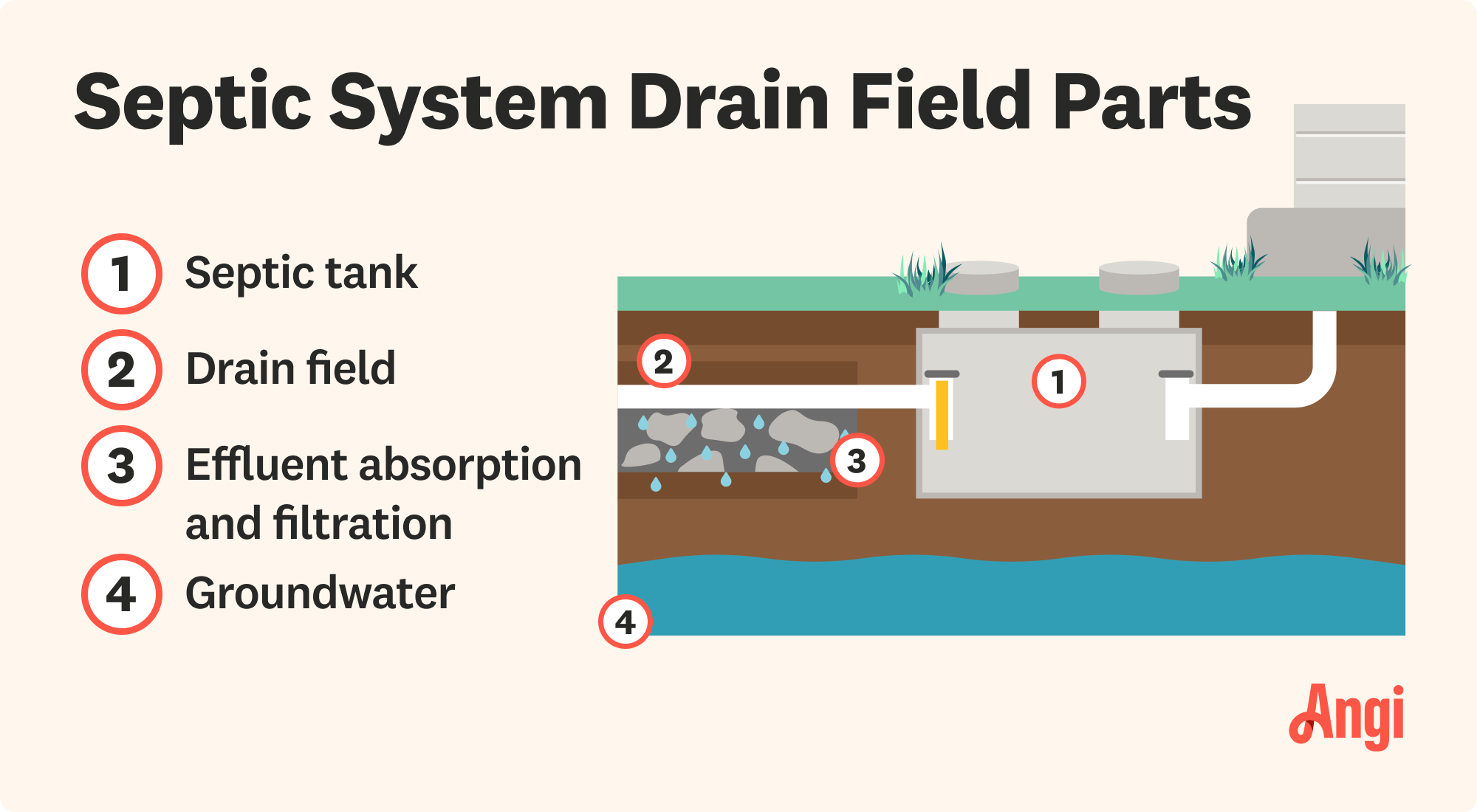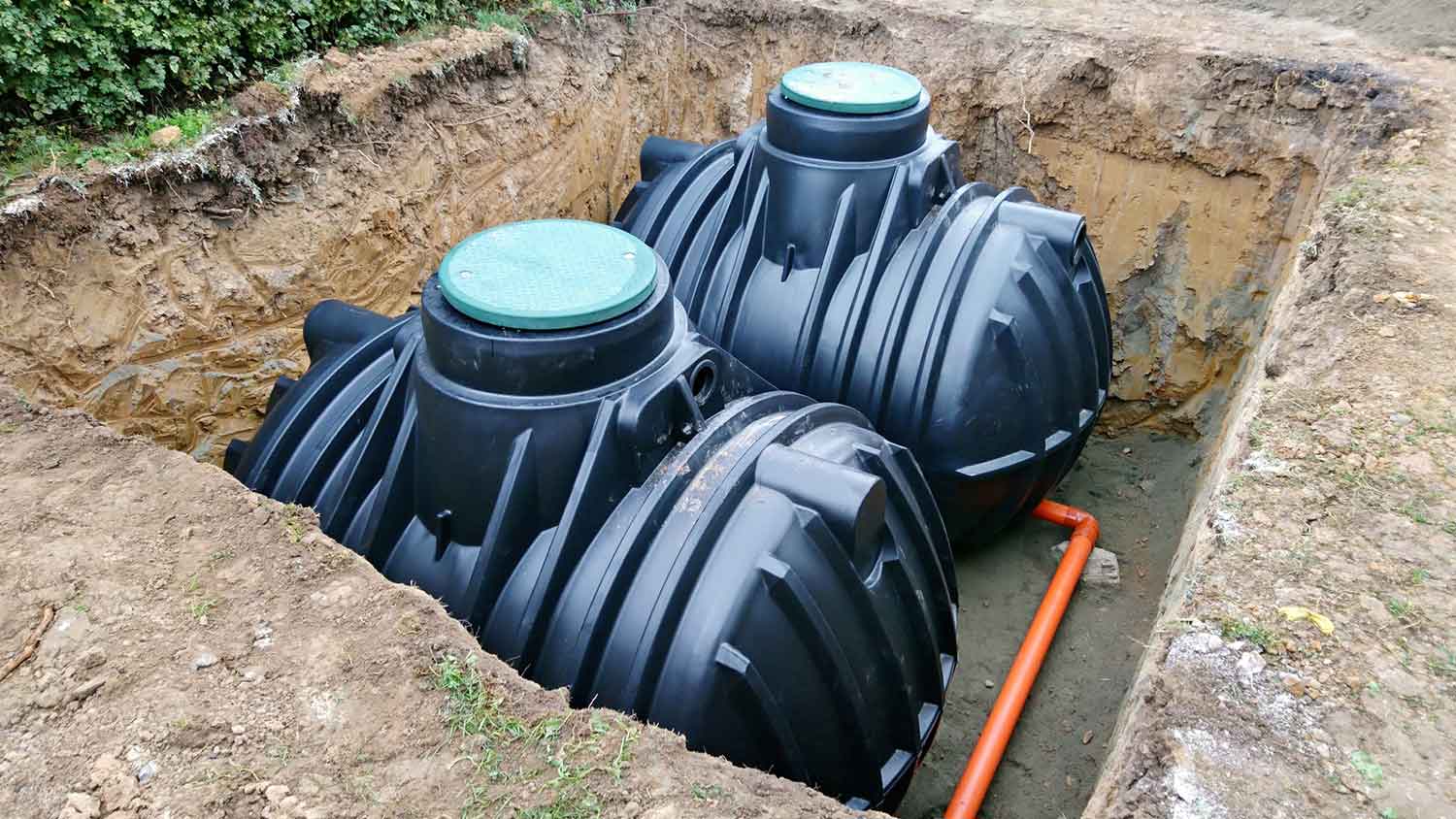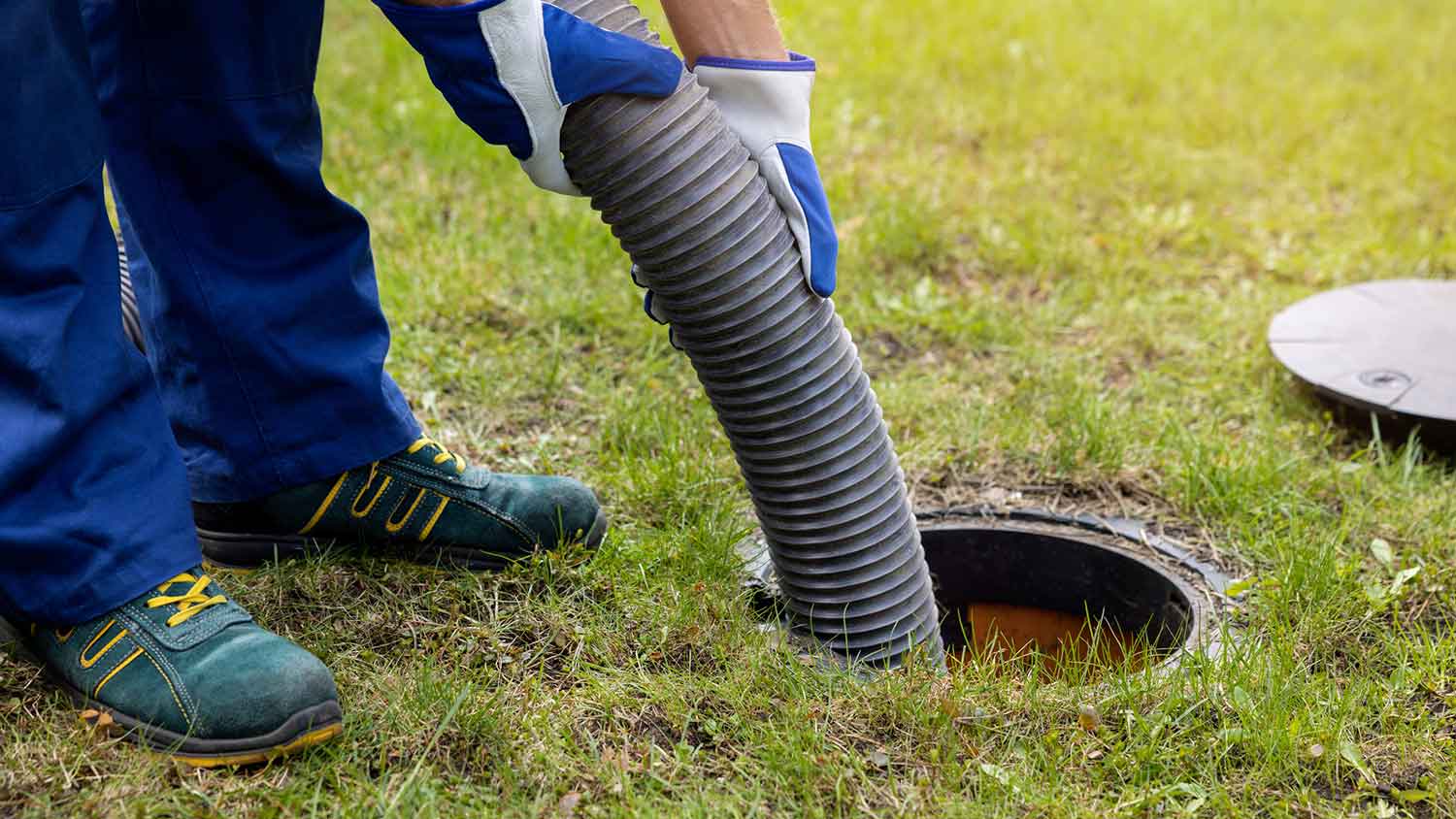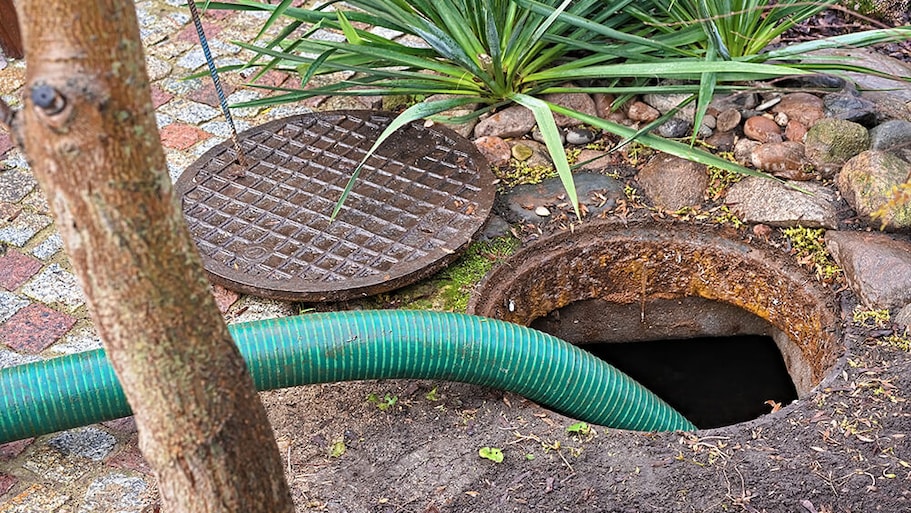How Deep Is a Septic Tank and Why Is It Buried in the First Place?
How low can they go?


Septic tanks can be buried anywhere from 4 inches to 4 feet below the ground’s surface, on average. There’s no single, standard depth.
Factors determining the depth of your septic tank include the depth of your sewer line, how far the tank is from your home, and how high the bedrock is in your area.
Maintenance includes regularly pumping your septic tank, which costs about $400 per service, or $0.30 per gallon.
Let’s get the most important question out of the way first: How deep is a septic tank buried? Well, there’s no set, standard depth at which septic tanks are buried. Your septic tank may be buried anywhere from 4 inches to 4 feet below the ground, depending on factors like the depth of your sewer line, local regulations, and any existing obstacles that might be in the way.
Still, many questions remain. How does a septic tank work, and why is it (usually) buried in the first place? Read on to learn more about this common home wastewater treatment option, including important details about how to maintain your own septic system and increase its longevity.
How Does a Septic Tank Work?

A septic tank is a tank, usually made of concrete, plastic, or fiberglass, that utilizes time, gravity, and beneficial bacteria to separate solid from liquid waste. A septic tank is one important part of a septic system, which also includes a drain field. Septic systems are used to process wastewater in areas that aren’t connected to a city sewer system.
Inside your septic tank—which may be anywhere between 1,000 gallons and 3,500 gallons in capacity, depending on the size of your household—wastewater is naturally separated into three distinct layers:
Scum is composed of lighter solid waste materials, like fat, oil, and grease, and it floats at the top of the septic tank.
Effluent, the cleanest layer of the three, is composed of the wastewater left over after scum and sludge separate.
Sludge is the bottom layer, which is composed of heavier solid waste materials. Sludge must be periodically pumped out of the septic tank in order to avoid clogging the inlet or outlet pipes so that the septic system can keep working.
After the wastewater is separated into these three layers and partially treated, the effluent is pumped out into the drain field. The drain field uses filtration and more natural biological processes to further purify the wastewater before it returns to the aquifer, therefore effectively creating a self-contained sewer treatment system.
Why Is a Septic Tank Buried?

Septic tanks are generally (though not always!) buried underground for two main reasons:
Wastewater flows down and out of the house, aided by gravity, and an underground septic tank makes that process easier.
Many people don’t want an above-ground septic tank, which they may see as an eyesore on their otherwise pristine property.
But there’s no other reason governing how deep a septic tank should be buried aside from the characteristics of the land you’re installing it on. That’s why there’s no standard depth, and your septic tank could be as close as 4 inches to the surface or as far away as 4 feet.
Factors Determining the Depth of Your Septic Tank
So if there’s not some specific, standard septic tank depth, what factors go into determining whether yours will be just a few quick spadefuls of dirt away or if you’ll need to employ a heftier shovel?
Here are some of the factors that commonly determine how deep your septic tank is buried.
The depth of your main sewer line: Since the main sewer line carries all the wastewater out of your home, it makes sense that your septic tank should be at a similar depth to this pipe or just below it to use gravity to the system’s advantage.
Landscape characteristics: If there are obstacles on your property or your bedrock is high, these factors might influence how deeply your tank is buried. Plus, if those obstacles mean your tank must be buried further from your home, it will likely be buried deeper—again, to aid gravity in moving wastewater into the tank.
Landscaping: If your septic tank is very close to the earth’s surface, it will be more difficult to grow even a simple lawn over top of it, which is why some people prefer to bury it at least 4 to 6 inches below the ground.
Keep in mind that, depending on your specific needs and circumstances, pumps may be used that will enable you to place a septic tank at any depth necessary—even upstream from the house, against the flow of gravity. Still, the simplest and often most cost-effective way to install a septic tank is just below the ground’s surface.
How Deep Are Septic Drain Lines Buried?
So, now we know how deep the septic tank might be buried. But what about the septic drain lines that accompany it?
Like septic tanks, septic drain lines aren’t subject to one standard depth—though your local government may have requirements on the minimum depth or size of the drain field as a whole.
Generally speaking, septic drain lines are buried between 18 and 36 inches underground, and the pipes are surrounded by gravel and sand to aid in the filtration and water treatment process. Some septic drain lines may be buried just 6 inches under the ground. Being close to the surface helps aerobic bacteria influence and improve the water treatment process that occurs during filtration through the drain field.
How to Properly Maintain Your Septic Tank

Fortunately, septic systems, when properly maintained, are made to last. An immaculately maintained drain field could last up to 50 years, while a well-maintained septic tank could last up to 40. (Of course, there is some upfront expense to installing the system. Setting up a septic system costs about $7,310 on average.)
Here’s how to maintain your septic tank—and larger septic system—to ensure it stays in proper, working order for as long as possible.
Pumping your septic tank every three to five years is one of the most important septic maintenance tasks. When you combine that with flushing only approved items (toilet paper and waste) and avoiding driving over your drain field, you have a recipe for a long-lasting septic system.
Pump Your Septic Tank on a Regular Basis
Once your septic tank is full, the only way to get sludge out is to have it professionally pumped—which you’ll need to do, depending on the size of your household and your usage, approximately once every three to five years. Fortunately, the cost is relatively low given how much time you can go between professional services. A one-time septic tank pump service costs about $400, or $0.30 per gallon.
Avoid Putting Unnecessary Weight Over Your Drain Field
Although the PVC pipes that carry effluent out into the field are strong and durable, you should avoid driving vehicles over them or setting up heavy equipment, like an above-ground pool or storage shed, over them. In addition, avoid planting trees or other types of plants with strong, deep roots that could damage the pipes or the tank.
Be Careful What You Flush
Other than flushable toilet paper and human waste, nothing should be flushed down your toilet. That goes for period products, cigarette butts, and more. In addition, with a septic system, it can be helpful to use toilet paper as sparingly as possible. If you flush a lot of paper at once, you may clog the system.
Avoid Harsh Cleaning Chemicals or Antifreeze
Although many products are commercially available that claim to help your septic system do its job, if everything’s working correctly, nature should take care of it. Pouring these harsh chemicals into your system can, ironically, actually decrease its efficacy or infect your drain field with toxins.
When it’s time for your regularly scheduled maintenance, never fear: Your local septic tank company will be there to help!
Frequently Asked Questions
Trick question: There is no standard depth! Your septic tank may be buried anywhere from 4 inches to 4 feet below the surface of the earth, depending on factors like the height of the bedrock in your area and how far from your home the septic tank is located. If you’re not sure where your septic tank is located, a professional can help you find it.
The depth of your septic tank has nothing to do with its size. In fact, some septic tanks can even be installed above-ground! Like other sizes, a 1,000-gallon septic tank could be buried as shallow as 4 inches below the ground or as deep as 4 feet. It all depends on your specific property.
You can find your septic tank using a few different methods. For one, you can check your property records at your local municipal office. You can also inspect your yard looking for a depression, a septic tank lid, or lush septic-area vegetation which would indicate a leach field. You can also follow your pipes from the home to the yard. If you can't find your septic tank on your own, a local septic pro can help.





- What Is a Septic Tank and How Does It Work?
- You Just Had Your Septic Tank Pumped and It’s Full Again. Now What?
- How Often Does a Septic Tank Need to be Inspected?
- How to Check If a Septic Tank Is Full: 7 Easy Ways
- Here’s What to Put in a Septic Tank to Break Down Solids
- Why Septic Tank Pumping Is Crucial for Maintaining Your System
- Are Septic Tanks Bad? Pros and Cons to Consider Before Moving Into a House With a Septic System
- How to Find Your Septic Tank in 5 (or Fewer) Simple Steps
- What to Do After Your Septic Tank Is Pumped: 4 Top Septic Maintenance Tips
- Do All Houses Have Septic Tanks?











